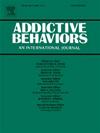A network perspective on heroin use: associations between craving, withdrawal symptoms, dependence, loss of control, and psychosocial consequences
IF 3.6
2区 医学
Q1 PSYCHOLOGY, CLINICAL
引用次数: 0
Abstract
Background
Opioid use disorder (OUD) is a complex diagnosis characterized by symptoms such as craving, tolerance, withdrawal, and impaired social, occupational, or recreational activities. However, there is a lack of data about the interconnectedness of these symptoms, in particular the links between withdrawal symptoms and psychosocial impairment. The present study uses symptom network analysis to better understand these associations surrounding heroin use.
Methods
We used data from individuals who reported heroin use during the past 12 months in the National Survey on Drug Use and Health (NSDUH) (year 2021, n = 207). We estimated a cross-sectional network that included heroin use-related aspects, including coping and withdrawal symptoms, consequences, loss of control, craving, and dependence symptoms. To examine key ‘bridge nodes’ that connect these different clusters, we computed a measure of bridge expected influence for each node.
Results
The network model revealed several symptom connections within and between clusters. The withdrawal symptom, sleep problems, had the strongest bridge centrality. The dependence symptom “increased use for an effect”, was a key bridge node connecting to withdrawal symptoms and consequences. Craving was connected with two withdrawal symptoms (depressed mood and sweating). Additional symptom connections emerged between the loss of control and other dependence symptom nodes.
Conclusions
Our network analysis model provides additional insight into how heroin use symptoms and relevant characteristics are interconnected. Craving and loss of control (time spent using, amount of use) map onto specific withdrawal symptoms.
海洛因使用的网络视角:渴望、戒断症状、依赖、失去控制和社会心理后果之间的联系
背景:阿片类药物使用障碍(OUD)是一种复杂的诊断,其特征是渴望、耐受性、戒断以及社交、职业或娱乐活动受损。然而,缺乏关于这些症状之间相互联系的数据,特别是戒断症状与社会心理障碍之间的联系。本研究使用症状网络分析来更好地理解这些与海洛因使用有关的联系。方法我们使用的数据来自全国药物使用与健康调查(NSDUH)(2021年,n = 207)中过去12个月内报告海洛因使用的个人。我们估计了一个包括海洛因使用相关方面的横断面网络,包括应对和戒断症状、后果、失去控制、渴望和依赖症状。为了检查连接这些不同集群的关键“桥接节点”,我们计算了每个节点的桥接预期影响度量。结果该网络模型揭示了集群内部和集群之间的若干症状联系。戒断症状,睡眠问题,桥性中心性最强。依赖症状“为了某种效果而增加使用”是连接戒断症状和后果的关键桥梁节点。渴望与两种戒断症状(抑郁情绪和出汗)有关。在失去控制和其他依赖症状节点之间出现了额外的症状联系。结论sour网络分析模型进一步揭示了海洛因使用症状与相关特征之间的相互关系。渴望和失去控制(使用时间,使用量)映射到特定的戒断症状。
本文章由计算机程序翻译,如有差异,请以英文原文为准。
求助全文
约1分钟内获得全文
求助全文
来源期刊

Addictive behaviors
医学-药物滥用
CiteScore
8.40
自引率
4.50%
发文量
283
审稿时长
46 days
期刊介绍:
Addictive Behaviors is an international peer-reviewed journal publishing high quality human research on addictive behaviors and disorders since 1975. The journal accepts submissions of full-length papers and short communications on substance-related addictions such as the abuse of alcohol, drugs and nicotine, and behavioral addictions involving gambling and technology. We primarily publish behavioral and psychosocial research but our articles span the fields of psychology, sociology, psychiatry, epidemiology, social policy, medicine, pharmacology and neuroscience. While theoretical orientations are diverse, the emphasis of the journal is primarily empirical. That is, sound experimental design combined with valid, reliable assessment and evaluation procedures are a requisite for acceptance. However, innovative and empirically oriented case studies that might encourage new lines of inquiry are accepted as well. Studies that clearly contribute to current knowledge of etiology, prevention, social policy or treatment are given priority. Scholarly commentaries on topical issues, systematic reviews, and mini reviews are encouraged. We especially welcome multimedia papers that incorporate video or audio components to better display methodology or findings.
Studies can also be submitted to Addictive Behaviors? companion title, the open access journal Addictive Behaviors Reports, which has a particular interest in ''non-traditional'', innovative and empirically-oriented research such as negative/null data papers, replication studies, case reports on novel treatments, and cross-cultural research.
 求助内容:
求助内容: 应助结果提醒方式:
应助结果提醒方式:


